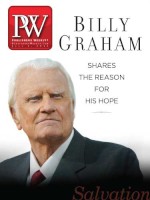In Countdown: Our Last, Best Hope for a Future on Earth?, journalist Alan Weisman asks essential and sobering questions about population growth.
How did you become interested in environmental issues?
I lived in Prescott, Ariz., when I was just beginning as a freelance writer. Prescott College had one of the original environmental studies programs in the U.S., and I used to accompany classes led by ecologists and oftentimes economists, historians, and anthropologists. We’d go to the bottom of the Grand Canyon or into northern Mexico, and I started listening to how ecologists connect everything.
You traveled to more than 20 countries for this book. How did you choose them?
I had to consider which places would portray the issue [of] population growth. There were contenders I ended up not going to [such as] Brazil and Indonesia. I went to Costa Rica to meet Gretchen Daily, a scientist there. As a result, I got the population story for all of Latin America, because Costa Rica is where USAID really began family planning in Latin America. Indonesia is the biggest Muslim country, [with] a very effective family planning program, but Iran was the more powerful example. Ecologically, the Philippines gave me the same ecosystem as Indonesia, plus it’s a country where the Catholic Church still has a lot of power. I chose Niger because it has the highest fertility rate.
What will it take to achieve a sustainable human population?
Every 4.2 days, we’re adding a million more people to the planet. I contacted an elite demographic institute in Vienna and asked what would happen if the world participated in the Chinese one-child policy. It turned out that in less than a century, our population would be back to what it was before it exploded (beginning in the 20th century). Many environmental problems might get solved if there were fewer of us. I ended my previous book, The World Without Us, by raising that point. That turned into a three-year speaking tour. Everywhere I went, I expected resistance, but the reception was positive.
Was there a particular country that signaled a disaster waiting to happen?
Pakistan is growing so fast and it’s already so destabilized. Yet the most hopeful moment of the book is in the Pakistan chapter—the Citizens Foundation schools, where classrooms are half boys and half girls, and the boys are totally respectful of the girls. They didn’t have to talk about family planning. The girls already knew how many kids they wanted because they wanted to be like their teachers. If we can find hope in the middle of that kind of hell, there’s still plenty of hope we can get something right.



 Volume 260
Issue 26
07/01/2013
Volume 260
Issue 26
07/01/2013





